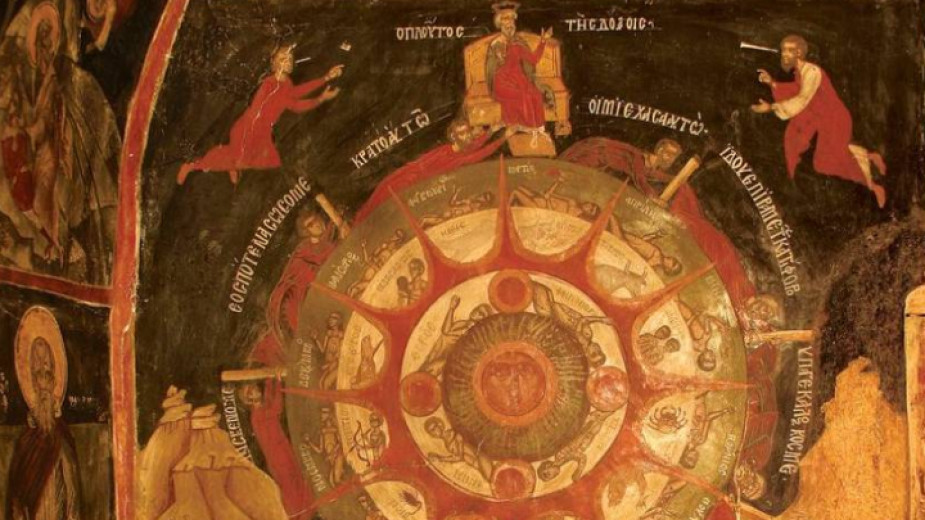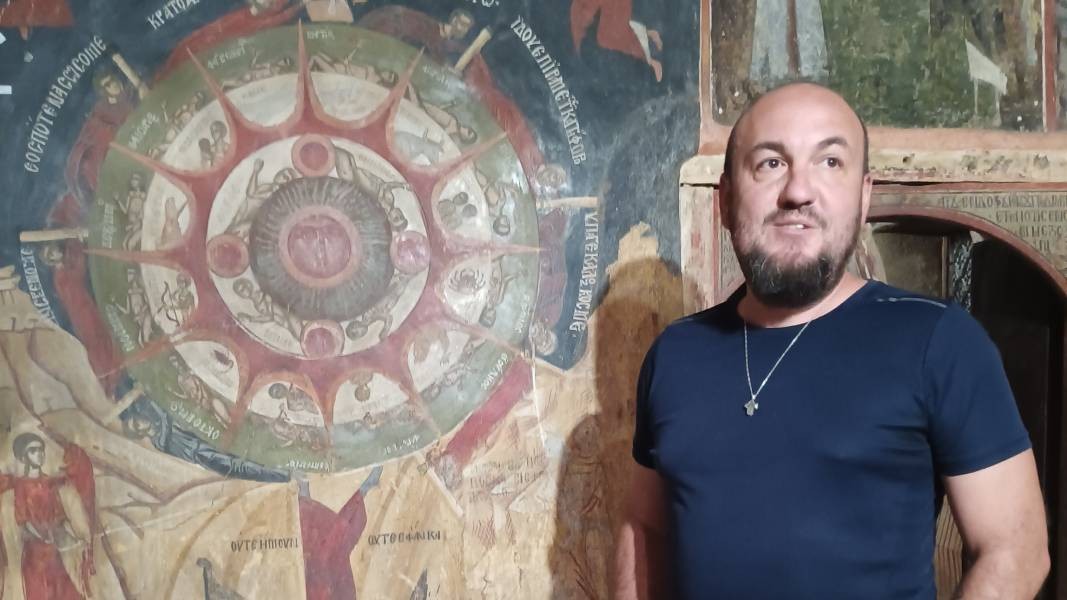 7
7
The Church of the Nativity is one of the most beautiful churches in Arbanassi, a village just 5 kms. from Veliko Tarnovo. It is one of the few preserved churches from the end of the 16th and the beginning of the 17th century in Bulgaria. It has four rooms in which more than 3,500 saints and biblical scenes are depicted. The iconostases are also well preserved – the one in the main part of the church dates back to the 18th century, and the one in the chapel – to 1649 which makes it one of the oldest iconostases preserved in the country. The church underwent restoration in the 1970s when the frescoes were cleaned of a thick layer of soot coming from the inside the church building candles and the structure was reinforced from the outside. The church is now taken care of on a daily basis by the people from the Regional Museum of History in Veliko Tarnovo.
The church was built in three different periods - construction work first started in 1597, then in 1638, until it was finally completed in 1649. All walls and vaults are covered in frescoes, the most intriguing among them being the so-called Wheel of Life, depicting, symbolically, the human journey through life – from birth, through the pursuit of wealth and power, to the inevitable end. The wheel is spun by angels and is a reminder of the transience of all earthly things.
“This is a scene depicted first in the church in Arbanassi,” says Petko Petkanski, guide at the Regional Museum of History in Veliko Tarnovo: 
“This is what tourist groups are interested in most. Every item inside the church is of enormous significance, some of the scenes are connected with lessons that are important to every one of us. The Wheel of Life scene is particularly striking – a symbol of how fleeting human life is and of the salvation of our immortal soul. Targeted most of all at the rich, this is a lesson that is a reminder that even if you have everything in life, what matters most is to save your soul.

Or as the bible goes: “For what is a man profited, if he shall gain the whole world, and lose his own soul?” The wealthy bear a heavier burden of responsibility and they ought to think about how they are spending their lives and what they use their money for. They are called upon to take care of themselves but also of others. The more a person owns the more responsibilities they have. That is why this scene was created here, in Arbanassi, because a new class of wealthy Christians was taking shape at the time, something that was not typical of the Ottoman Empire. As they became aware of their responsibility, they invested some of their money in building churches – as an expression of their faith and to serve the community.”

During this period, after a military campaign by Sultan Bayezid II in this part of the Balkans, Albanians came and settled in Arabansi. They were Orthodox Christians which helped them assimilate into the local population quickly, says Petko Petkanski:
“We have information about these people’s names, the people who came to live in Arbanassi in the 17th century. In our day there are practically no Albanian names. The village was “Bulgarized” and its population was predominantly Christian. In what was then the Ottoman Empire people were divided into Muslims and Christians – nationality didn’t matter, religion did. That is why all Christians in the empire were simply called Christians because it was difficult to distinguish between them. But that led to problems and there was a time when the Bulgarian ethnic group was at risk of disappearing altogether. After the 18th century the numbers of Bulgarians were slowly restored. But in the 19th century many of the wealthy families started speaking Greek and following Greek ways, as Paisius of Hilendar himself wrote. But with the emergence of a wealthier class who would travel outside the bounds of the Ottoman Empire for their education, the national idea that Bulgaria must restore its church boundaries sprang back to life. And it is no coincidence that the first phase of our national-liberation struggles were precisely for independence of the church. That is what makes these churches in Tarnovo and the environs so important. Arbanassi is believed to have played the role of an episcopal centre which was transferred from Tarnovo (after Bulgaria fell under Ottoman rule).”
Nowadays the quant village of Arbanassi, with its wonderfully preserved houses, 5 churches and two functioning monasteries, has around 300 inhabitants but there is no shortage of tourists in its cobblestone streets. The village’s feast day falls on 15 August and coincides with one of the best-loved summertime feast days - the Assumption of the Blessed Virgin.
Translated and posted by Milena Daynova
Photos:Gergana Mancheva, arbanassi.org, Regional Museum of History-Veliko Tarnovo
The Rhodope narrow-gauge railway is one of the world’s most scenic autumn train journeys, according to an international survey by the British JR Pass tourist platform. The Rhodope Caterpillar - the train that crosses mountains and time..
An ancient water clock known as clepsydra, restored according to ancient models, has been unveiled on the top of Sahat Tepe Hill in Plovdiv . The only clock of this type installed outdoors in Bulgaria has become the city's newest attraction. The..
Bulgaria’s Ministry of Tourism participated in the most significant international tourism exhibition in Japan— Tourism Expo Japan (TEJ), held from September 25 to 28, 2025, at the Aichi Sky Expo exhibition venue in Nagoya, Aichi Prefecture...
The Rhodope narrow-gauge railway is one of the world’s most scenic autumn train journeys, according to an international survey by the British JR Pass..

+359 2 9336 661
